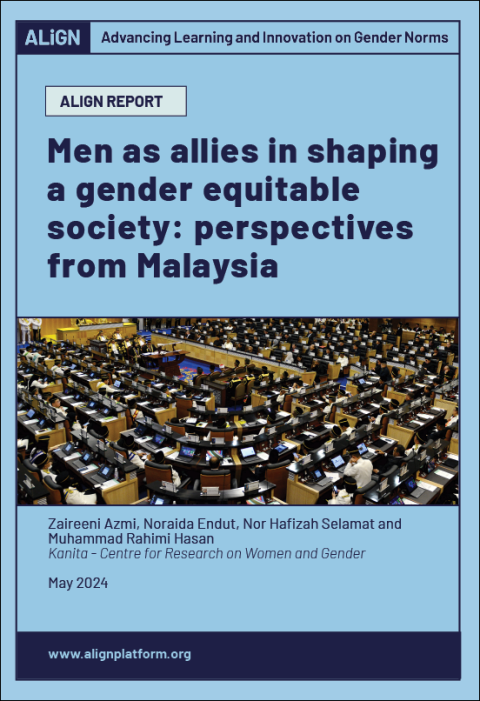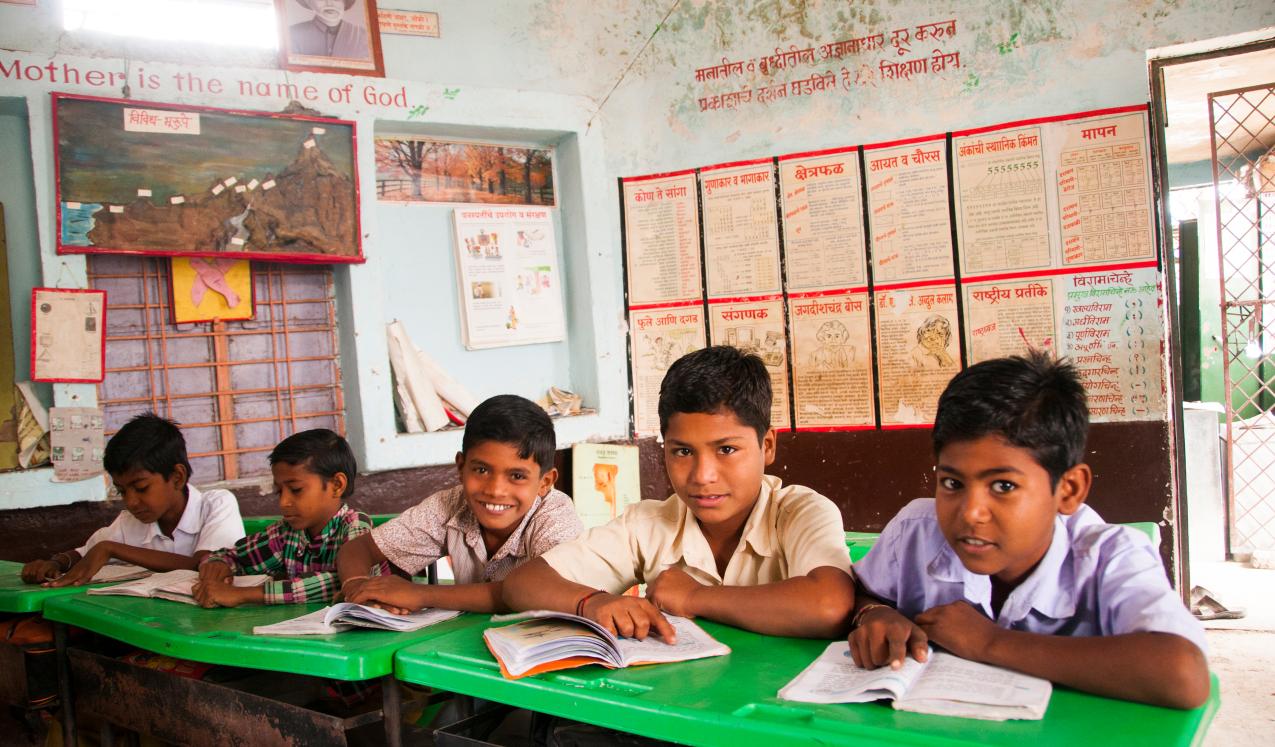
- Blog
- 3 October 2024
7 insights for working with boys on gender norms for World Teachers’ Day
- Author: Rachel Marcus
- Published by: ALIGN
Masculinity norms can shift if school-based gender equality initiatives are scaled-up. But many practitioners and teachers are not equipped with the best knowledge or resources to work with boys on gender equality.
In recent years, research has noted growing misogyny among a subset of boys and young men. Misogynistic ‘manfluencers’ have gained millions of followers, and some surveys have shown less support for gender equality among young men aged 16–24 than among those in their early 30s. When this kind of evidence emerges, it is usually followed by a call for schools to do more to nurture gender-equitable values among boys and young men.
We know education has a unique potential to shift gender norms – both in more progressive and in more restrictive directions. Many of us will remember being exposed to new ideas at school – from teachers or classmates – that led us to question beliefs we had previously accepted. We also remember kids who ‘strayed’ from accepted norms for their gender who were gossiped about or bullied, or teachers who unwittingly reinforced gender stereotypes.
The last three decades have seen an explosion of innovative school-based courses and programmes that aim to nurture more gender-equitable masculinities. Over the last year, ODI has reviewed the evidence, and spoken with practitioners running these programmes from Cambodia to Guatemala, about how best to challenge sexist and misogynistic attitudes and nurture more gender-equal norms.
For World Teachers’ Day, we are sharing the approaches that our research indicates lie at the heart of transformative change, and can best support teachers doing this challenging but crucial work.
1. Stimulate critical thinking on gender inequality
The most effective initiatives stimulate critical thinking to help students develop greater understanding of how they may be both affected by and play a role in reproducing gender inequalities. A key part of this is grounding critical discussion of gender and masculinity in practical and relatable examples.
Teachers can encourage boys to be self-reflective by discussing patriarchal or hierarchical structures in their own lives, such as dynamics in the playground or their families. The Study Hall Education Foundation in India engages boys in critical thinking through focusing on gendered aspects of men’s roles in society, such as their responsibility to care for their parents, and the pressures associated with being a breadwinner.
‘I was told in my family that men have to be strong and violent, that it is our nature as men. But I know now that I do not need to be violent.’
- Participant in Me and My New World schools programme, Panama
2. Use learner-centred methods and interactive activities
Participatory approaches, such as role plays and group discussions, can enhance engagement and make learning more memorable for students. This is particularly important, as learning at school is often competing with messages from online influencers who reach students in more entertaining and bite-sized ways. Interactive activities and experiential learning also helps to build social and emotional skills, as students can practice gender-equitable and respectful communication, which they can use in family life and intimate relationships.
In Guatemala, SERNiña has developed an activity for schools called ‘The Mask You Wear’. In this workshop, boys write emotions they are more likely to express on the outside of the mask and those they tend to hide on the inside. Then, together they analyse why they choose to express some emotions and not others, and how other people’s expectations affect their decisions, helping them to expose and break away from rigid gender norms.
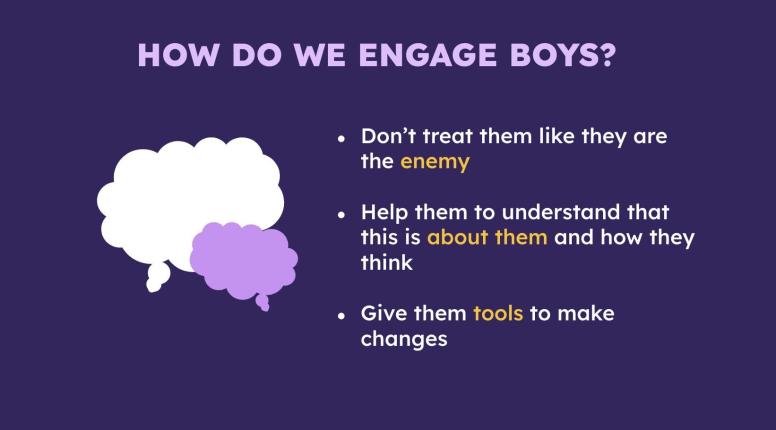
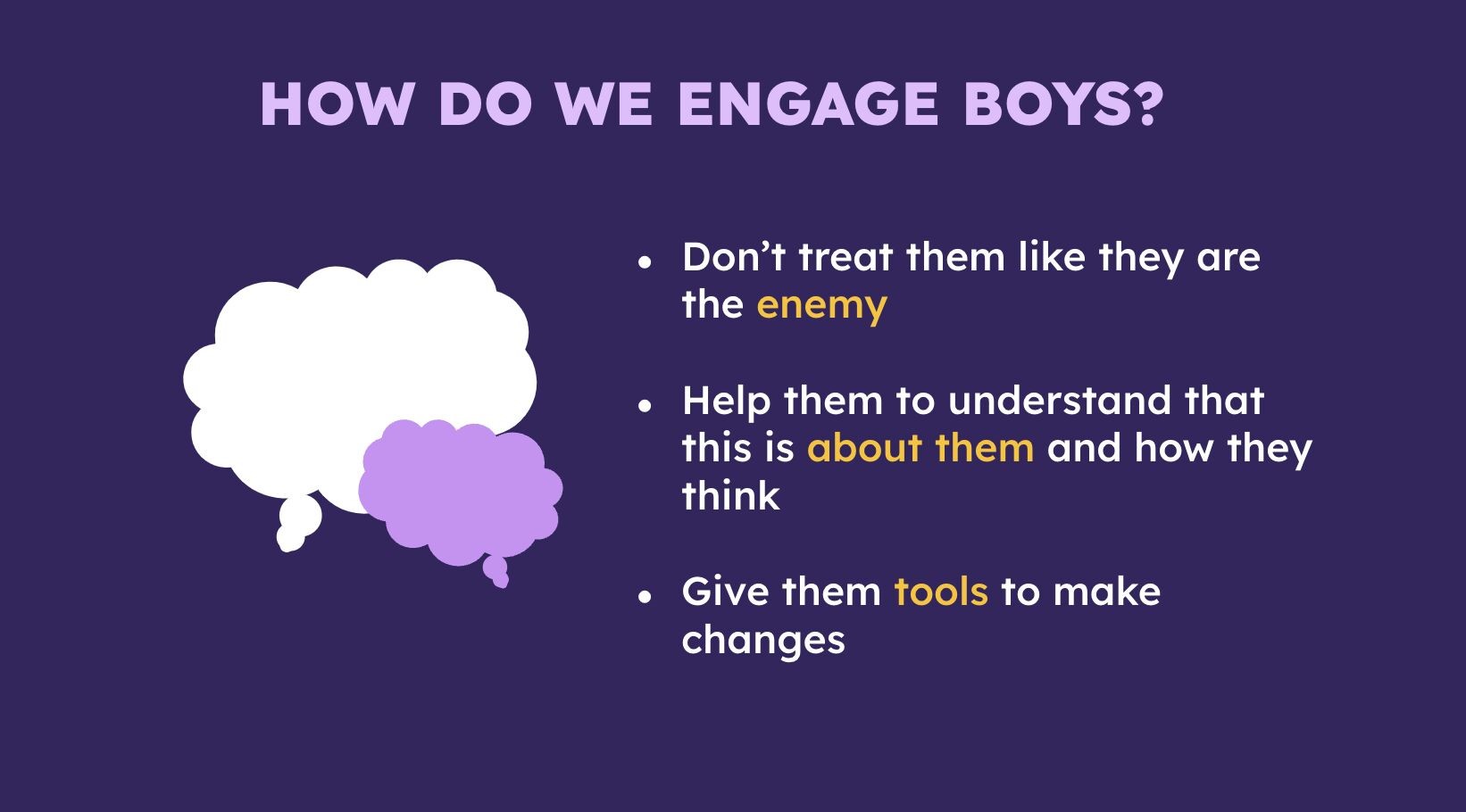
3. Be constructive rather than confrontational
Programme framing really matters. Practitioners mention that boys often feel ‘under attack’ in structured sessions about gender, so it’s important to avoid presenting boys as oppressors and girls as victims. Not only does this simply not resonate with many boys’ experience, it risks putting the emphasis on individuals, hiding the way that inequalities are shaped by larger forces.
Teachers and facilitators have found different ways to make sure content resonates and motivates students to fully engage. These include emphasising content widely regarded as valued or useful, such as life skills or respectful relationships. In the UK, Beyond Equality avoids using terms like ‘toxic masculinity’, presenting workshops as spaces to explore what it means to be a boy or a man in today’s society. Many courses start from exploring different experiences of being a boy, and move from this foundation to discussing the inequalities that girls and women face.
‘Don’t start with a frontal attack or with gender equality. You have to point out to the boys that we care about them and we want them to thrive. You have to build empathy and show them it’s not about boys vs. girls.'
- Dr Urvashi Sahni, Study Hall Educational Foundation, India
4. Build safe, inclusive and empathetic environments
When young people feel safe and respected, they are more likely to be open to challenging their beliefs, and to sharing their experiences and feelings. By building positive relationships based on trust and mutual respect, teachers can show care and empathy for students. Questioning deeply held beliefs can be challenging emotionally, so providing a warm and supportive environment can encourage boys to do so more willingly. Studies from contexts as diverse as Australia, India, and Northern Ireland have shown that this makes a huge difference to boys’ engagement with gender equality courses.
5. Recognise boys’ diverse lived experiences
In any context, boys may experience dominant gender norms very differently depending on their background – for example, their social class, race or sexual orientation – as well as individual personalities and interests. Effective workshops surface and value these differences, and help students understand how gender inequality is intertwined with other inequalities. They also help students identify how – in their diverse contexts and circumstances – they can behave in gender-equitable ways. This often requires adapting curricula to local realities. In India, the scale-up of the Taaron ki Toli school gender equity programme adapted learning materials to take on board key gender equality issues in different states, such as child marriage.
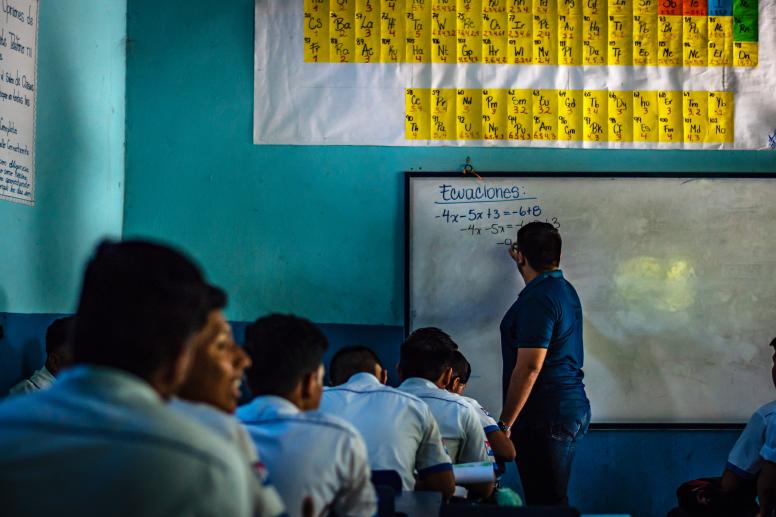
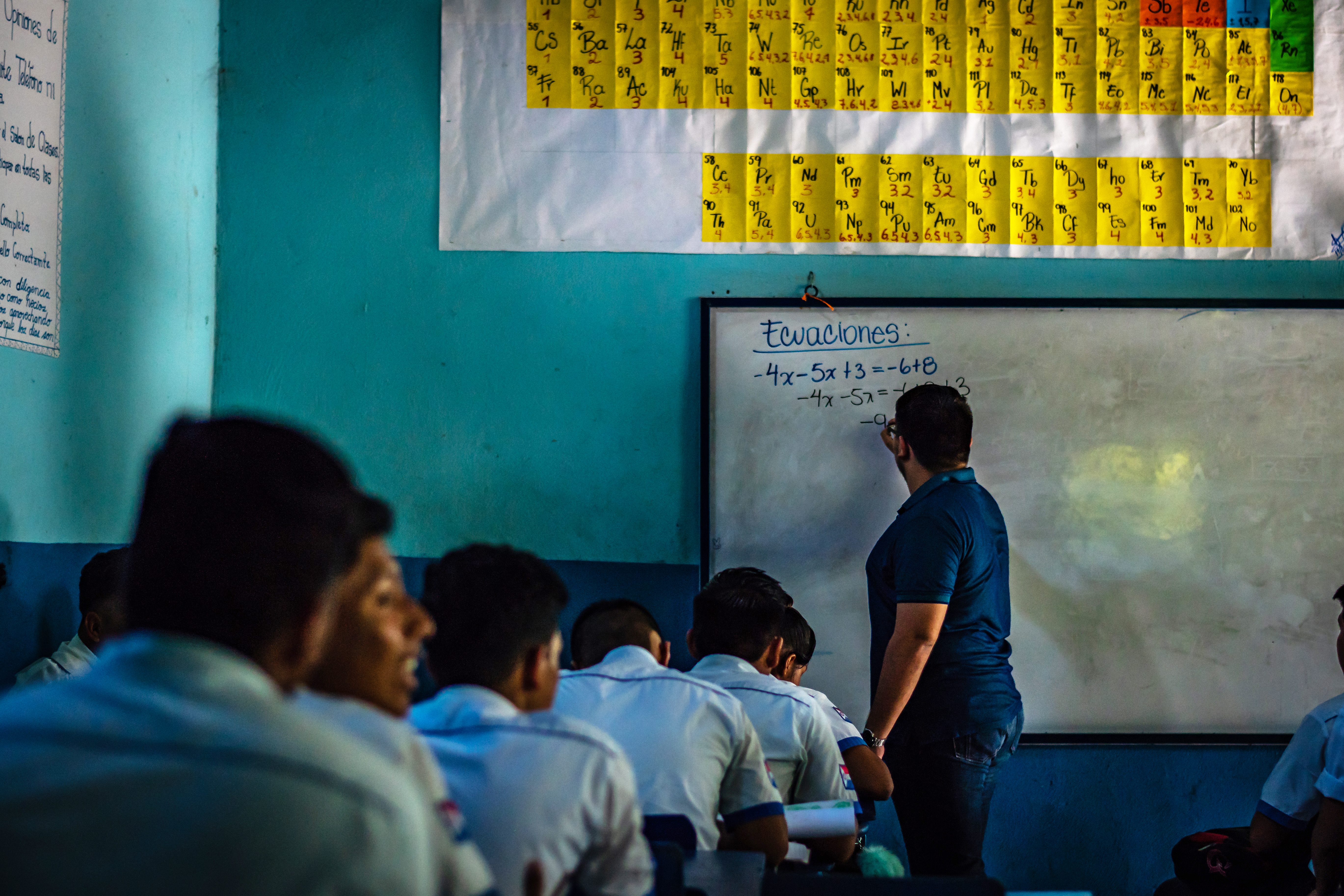
6. Leverage moments of resistance as a chance for critical reflection
Learning about gender inequalities and considering one’s personal experiences and responsibilities can evoke resistance. This can reflect wider societal prejudices and discourses, but may also be a way of dealing with difficult emotions. If boys make dismissive comments or use discriminatory language (such as sexist or homophobic slurs), teacher or facilitators can probe why they said that and what lies behind it. Practitioners from Beyond Equality and SERNiña said they try to distance themselves from the content of the remarks, without condemning the individual, but use the moment in a way that does not allow discrimination to go unchallenged. This can allow for classes to have tough conversations without challenging content being shut down.
7. Motivate action for change
The goal of gender equality workshops and courses is not just personal transformation but also social change. The most effective initiatives aim to encourage boys to think differently about gender, but also motivate them to play a more active role in challenging gender inequalities, whether in their family, among their peers or in intimate relationships. For example, at the core of Breakthrough’s schools programme in India is a ‘Me to We’ approach, engaging young people as change-makers in their families, communities and societies.
Research shows boys taking on household chores stereotyped as women’s or girls’ work, stepping in to stop sexual harassment, or encouraging their sisters to continue in education as a result of school gender equality programmes. Others reported boys and girls working together as part of gender equality clubs to promote more inclusive and equitable school environments.
Supporting teachers to lead change
Underpinning these promising practices is the critical role that teachers and facilitators play, as without skilled and committed teachers none of these gender equality initiatives could be implemented. The pressures of exams and packed curricula, low-resource environments, overcrowding or limited resource materials can make this doubly challenging.
On World Teachers’ Day, it’s important to recognise that this is not easy work – emotionally or even physically: in some contexts it can put teachers at risk of violence. Our forthcoming reports, to be published later this month, will show how teachers can be better supported to nurture gender-equitable values among their students.


About the author - Rachel Marcus
Rachel Marcus is a social development researcher and practitioner who focuses on social equality, particularly related to gender, childhood, adolescence and youth. In recent years she has led research on gender and school environments, girls’ clubs, working with boys to promote gender-sensitive masculinities, and gender-sensitive youth livelihood programmes.
- Countries / Regions:
- Global
Related resources
Report
14 April 2025
Published by: ALIGN, IfD

Report
26 March 2025
Published by: ALIGN, Aahung

Blog
19 December 2024
Published by: ALIGN

Blog
5 December 2024
Published by: ALIGN

Report
20 November 2024
Published by: ALIGN

Report
19 November 2024
Published by: ALIGN, Mexfam
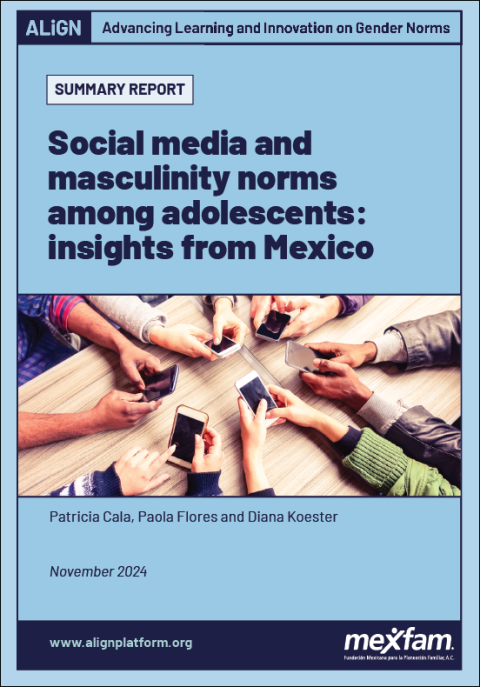
Report
13 November 2024
Published by: ALIGN

Report
13 November 2024
Published by: ALIGN

Report
8 September 2024
Published by: ALIGN

Blog
28 May 2024
Published by: ALIGN

Report
28 May 2024
Published by: ALIGN

Report
20 May 2024
Published by: ALIGN, Centre for Research on Women and Gender, KANITA
